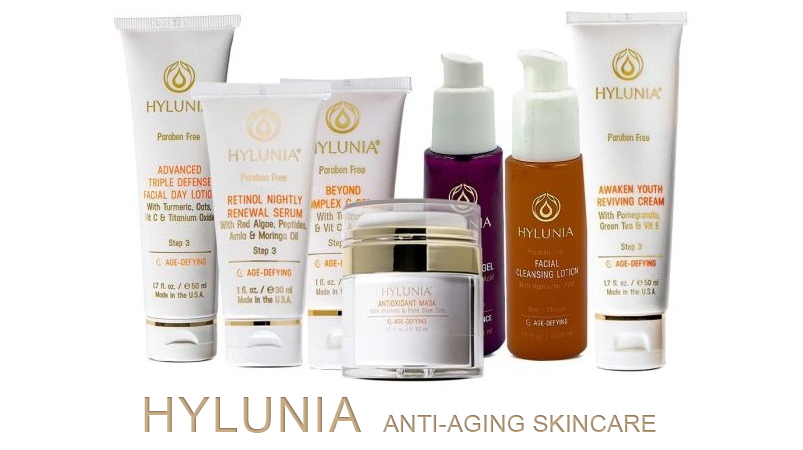
Exfoliating mature skin can be a bit like walking a tightrope—one wrong move, and your skin ends up irritated or over-stripped. But when done right, exfoliation removes dead cells, brightens skin, and even smooths out fine lines. If you’re looking for a guide to exfoliating mature skin gently and effectively, you’re in the right place.
Contents
Why Exfoliation Matters for Mature Skin
As we age, skin cell turnover slows down. Dead cells linger on the surface, making skin look dull and contributing to fine lines and uneven texture. Exfoliation helps clear these cells, allowing fresh, new skin to shine through. For mature skin, a gentle approach is essential; too much exfoliation can strip natural oils and lead to irritation.
The Role of Cell Turnover
In younger skin, cell turnover is naturally quicker, so dead cells are regularly shed. With mature skin, turnover can slow to almost half the speed, which is why exfoliation becomes more important. By encouraging the removal of dead cells, you can improve skin texture and boost the effectiveness of other skincare products.
Avoiding Irritation
It’s easy to go overboard with exfoliation, especially with harsher ingredients. Mature skin tends to be thinner and more sensitive, so a gentle approach is key. Instead of heavy scrubbing, look for mild, effective methods that will leave your skin fresh without the redness.
Types of Exfoliants for Mature Skin
There are two main types of exfoliants: physical and chemical. Each has its place, but for mature skin, chemical exfoliants are often gentler and more effective. Let’s take a closer look at each type and how to use them without overdoing it.
Physical Exfoliants
Physical exfoliants use small particles or beads to slough off dead skin. While effective, they can sometimes be too abrasive for mature skin, especially if used too frequently. If you prefer a physical exfoliant, choose one with fine, rounded particles to avoid micro-tears in the skin.
- Gentle Scrubs: Look for exfoliants with jojoba beads or rice powder, which are less likely to irritate the skin.
- Washcloth Method: Using a soft washcloth with your regular cleanser can provide mild exfoliation without harsh scrubbing.
Chemical Exfoliants
Chemical exfoliants use acids to dissolve dead skin cells without the need for scrubbing. They’re often preferred for mature skin as they can penetrate deeper and provide more even exfoliation. The two main types of acids to consider are AHAs (alpha hydroxy acids) and BHAs (beta hydroxy acids).
- AHAs: AHAs, like glycolic and lactic acid, are water-soluble and ideal for dry or mature skin. They work on the skin’s surface to gently remove dead cells and improve texture.
- BHAs: BHAs, such as salicylic acid, are oil-soluble and penetrate deeper into the pores. While BHAs are often used for oily skin, they can benefit mature skin prone to clogged pores.
Choosing the Right Exfoliating Ingredients for Mature Skin
With so many options available, it’s essential to choose ingredients that will benefit mature skin without causing irritation. Here are some gentle yet effective exfoliating ingredients for aging skin.
Glycolic Acid: A Powerful Yet Gentle AHA
Glycolic acid, derived from sugarcane, is one of the most popular AHAs for mature skin. Its small molecule size allows it to penetrate well, encouraging cell turnover and collagen production. However, a lower concentration is usually best for mature skin—around 5-10% for a daily product or 15-20% for weekly use.
Lactic Acid: Hydration Meets Exfoliation
Lactic acid is another AHA that’s a bit gentler than glycolic acid. It’s derived from milk, so it not only exfoliates but also hydrates. Lactic acid is an excellent choice for mature skin, as it removes dead cells while helping retain moisture, keeping skin soft and plump.
Polyhydroxy Acids (PHAs): The Gentle Alternative
PHAs, like gluconolactone, are larger molecules that penetrate the skin more slowly, reducing the risk of irritation. They’re especially beneficial for sensitive or mature skin that needs mild exfoliation. PHAs also attract moisture, making them ideal for dry, aging skin.
Enzyme Exfoliants: Natural and Mild
Enzyme exfoliants, derived from fruits like papaya and pineapple, break down dead skin cells gently. They don’t penetrate as deeply as acids, making them a great option for those with sensitive or easily irritated skin. Enzyme masks can be used once or twice a week for a gentle boost.
How Often to Exfoliate Mature Skin
Exfoliation frequency depends on your skin’s tolerance and the type of exfoliant you’re using. For mature skin, less is often more. Here’s a general guideline for how often to exfoliate without risking irritation.
Daily Exfoliation
If you’re using a mild AHA or PHA, you might be able to exfoliate daily. Look for products with lower concentrations that are specifically formulated for daily use. These products gently encourage cell turnover without over-stressing the skin.
Weekly Exfoliation
Stronger exfoliants, like glycolic acid peels, are best used once or twice a week. This approach gives your skin time to recover while still reaping the benefits of exfoliation. If you notice redness or sensitivity, scale back to every other week or switch to a gentler formula.
Creating an Exfoliation Routine for Mature Skin
Building an exfoliation routine for mature skin doesn’t have to be complicated. By using the right products at the right times, you can keep your skin smooth and radiant without irritation. Here’s a simple routine to consider.
Morning Routine
- Cleanse: Use a gentle cleanser that won’t strip your skin.
- Apply a Mild AHA or PHA Serum: If you’re using a daily exfoliant, this is the time to apply it. Follow with moisturizer and sunscreen.
Evening Routine
- Double Cleanse: If you wear makeup or sunscreen, start with an oil cleanser, followed by a gentle foaming cleanser.
- Weekly Exfoliant: If you’re using a stronger exfoliant, apply it once or twice a week in place of your daily exfoliant.
- Moisturize: Follow with a hydrating moisturizer to lock in moisture and calm the skin.
Signs You’re Over-Exfoliating (and How to Fix It)
Over-exfoliating is a common issue, especially with mature skin. If your skin feels tight, looks red, or becomes flaky, you might be overdoing it. Here are some signs of over-exfoliation and how to get your skin back on track.
Redness and Sensitivity
If your skin appears red or feels sensitive, it’s a sign to cut back. Give your skin a break from exfoliants for a week, and use only gentle, hydrating products until it calms down.
Flakiness and Dry Patches
Ironically, over-exfoliation can cause flakiness—the very thing you’re trying to avoid. Switch to a hydrating routine with no exfoliants for a few days, and consider using a gentle, fragrance-free moisturizer to help restore your skin barrier.
Increased Breakouts
Yes, over-exfoliation can even cause breakouts. If you notice an increase in acne, scale back on your exfoliants and focus on soothing ingredients like aloe vera and niacinamide until your skin balances out.
With a gentle, well-balanced approach, exfoliating mature skin can enhance your glow and keep your skin smooth without the irritation. A little goes a long way—especially when it comes to exfoliating mature skin. By choosing the right ingredients and knowing when to stop, you’ll help your skin age beautifully and gracefully.

